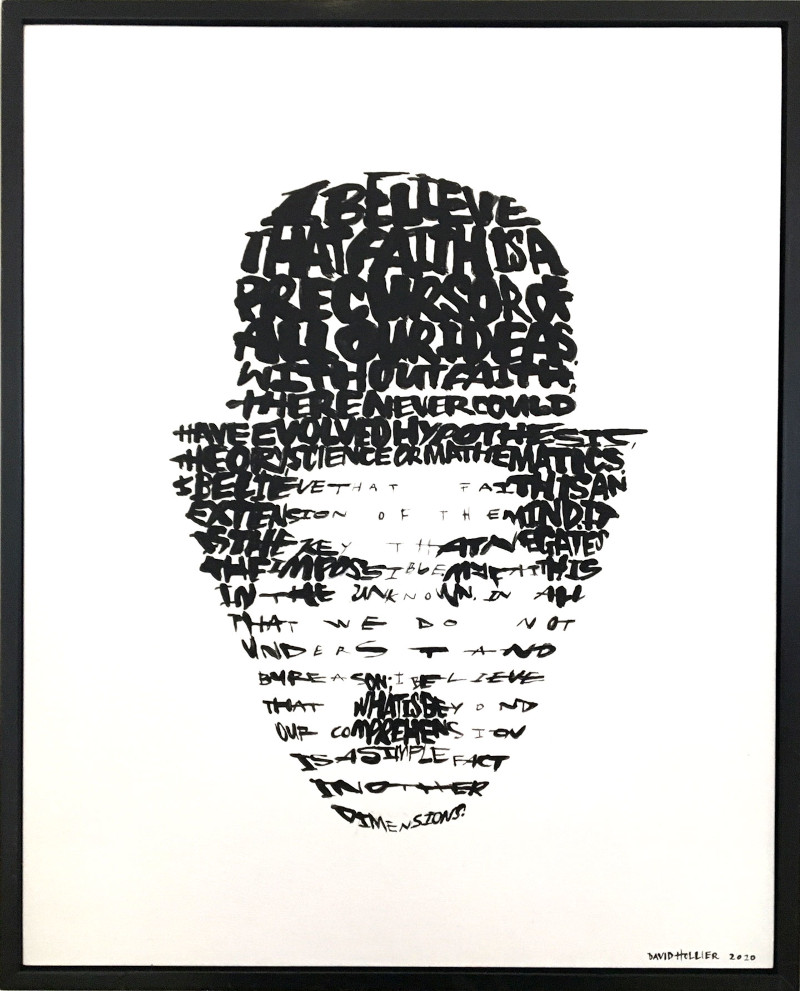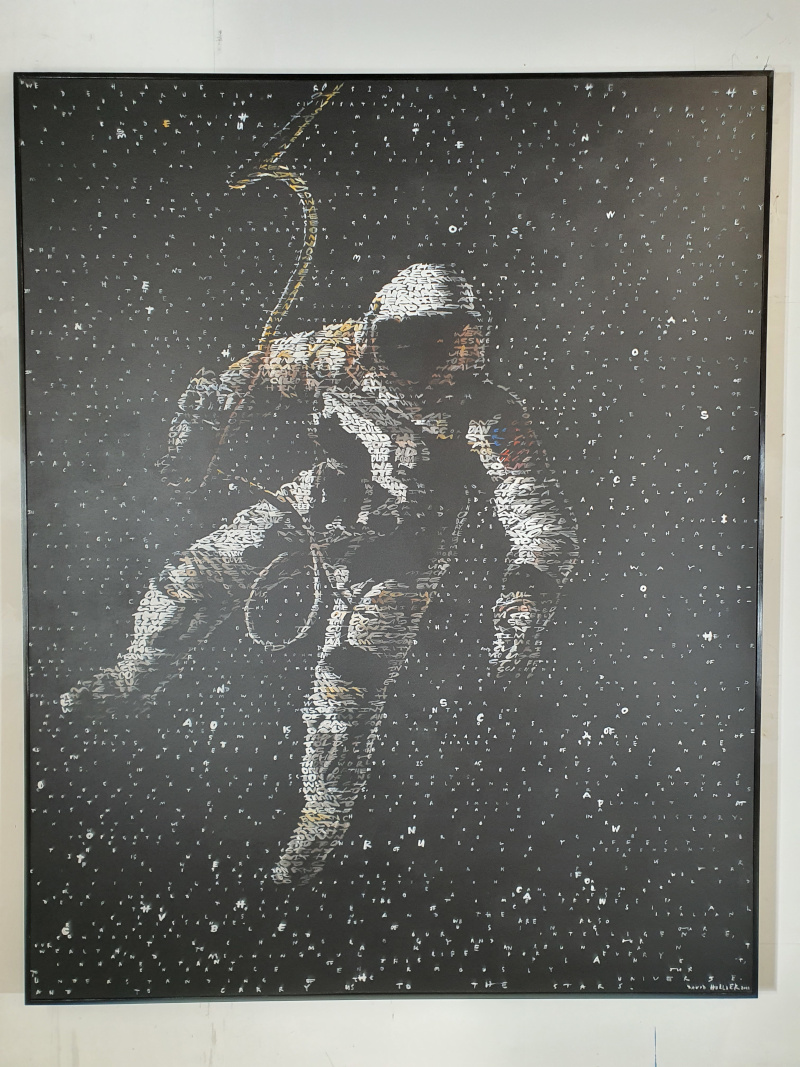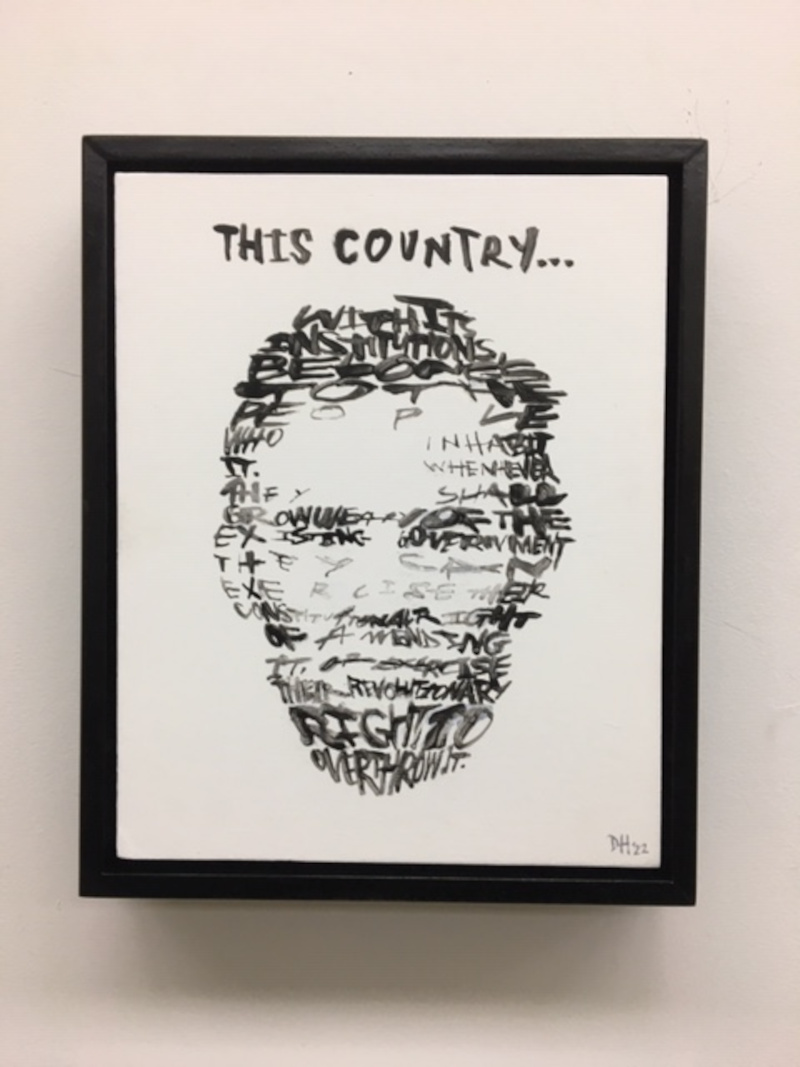Artist Interviews 2022
David Hollier 
By Laura Siebold

David Hollier is a practicing artist and is best known for his “imago verbosa” (drawing with words) series. Blending images and words by weaving together portraitures of famous personalities with some of their most well-known statements, David successfully moves his art into a category that cannot be easily defined, or categorized.
Hollier’s gallery New Apostle Gallery first opened in Britain to promote his own art, but now, adding its US branch, represents various other artists that are unified in their common dedication to art as a life mission. Read on to learn more about David Hollier’s art.

David, I discovered your work at The LA Art Show in January 2022 and was fascinated by your “imago verbosa” (drawing with words) series. How did you get the idea to blend portraits of political and cultural items and their famous words in a single image? How long have you been working on this technique?
I started making images with words about 2009. Previously I had been experimenting with creating images solely out of a group of parallel lines, where the image was darker the line was thicker. Then I decided to use text instead where the image was darker, so the text was more concentrated. In 2010, I was commissioned to paint a portrait of a friend for his 40th birthday, so I decided to make his portrait from text about his life, from birth to 40. It was very well received, and I realized I was on to something.

How do you choose which words you want to utilize for the “imago verbosa” series?
The initial concept was marrying iconic images with iconic words, whether that be speeches, prose, or songs.

Did you have an artistic upbringing? How would you describe the role of the artist in modern times? Elaborate.
Whilst I would say I come from a very creative family, art was considered a pastime, not a vocation. But for me, it was all I wanted to do. When I was 4, my father drew me a picture of 3 dinosaurs. I was transfixed, to me, they were so real. All I wanted to do was draw. When I was 10, my aunt taught me to paint with watercolor, now all I wanted to do was draw and paint. I'm very happy to say that's what I do.

Would you characterize your art as political or sociocritical?
I see it more as culturally relevant, but I guess some of it is social criticism.

Where do you position yourself as an artist? What can we learn from interacting with your art?
I'm a practicing artist, and very pleased to be able to do what I do. I have always been smitten by the idea that people have my artwork in their possession, hopefully on their walls, and that it brings them some joy and entertainment.

You’ve created several large-scale murals throughout your career. How do you choose the locations for those murals and what has been the most important one you’ve done so far?
I love the challenge of large-scale work, also I studied as a public artist, so a lot of my early career was creating and painting murals. The next one is and always will be the most important one.

New Apostle Gallery represents your art internationally. Is your art perceived differently in different countries?
I set up New Apostle Gallery so I could do an art fair in Miami in 2014, but then the first physical venue where I did an exhibition was in Stroud, England. Since then, I've mainly concentrated on the US market, being based in NYC for the past 20 years. I do have an international following but I think that mainly comes from all the shows I've done in Miami during Art Basel in December [2021], which draws a huge international audience.

Do you have boundaries when it comes to portraying famous personalities? How do you decide which personality to portray next?
Initially, I painted people that had an impact on my life. Now a good percentage of my work comes from commissions.

Have you ever faced drawbacks in your career?
Not really. However, I'm not very good at the business side of things, which is so important these days.
Life on Earth is ephemeral, but art has the power to transcend time. What do you wish to be your artistic legacy?
Most of my work is in people's homes, but I'd love to see some in museums also.
|
|

